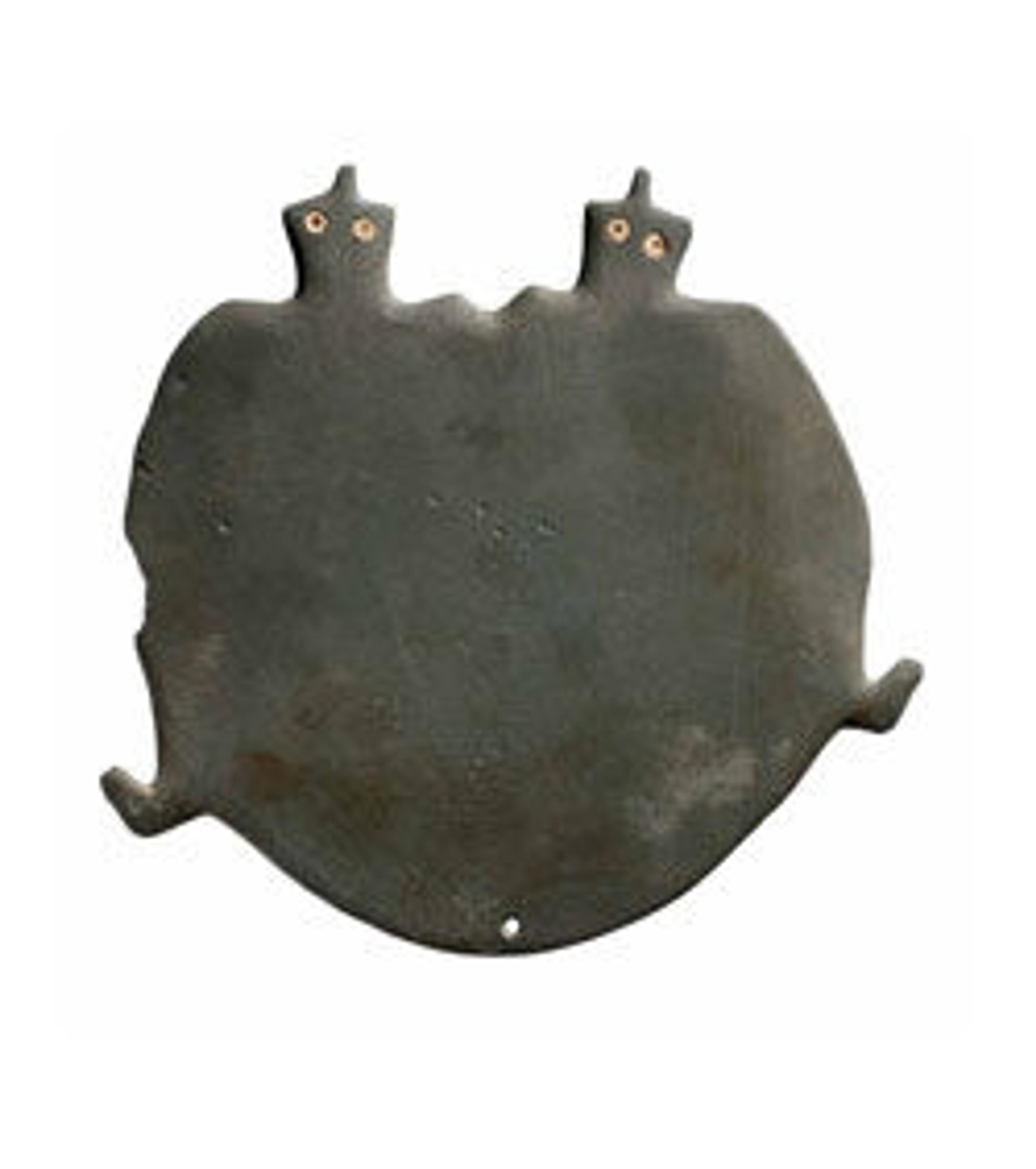Stela of a Woman Named Niseret
This stela bears the name of a woman who lived in the early days of the Egyptian state. Her stela was found in the royal cemetery in Abydos, which yielded approximately 360 similar stelae, the majority of which belonging to women.
The surface of the stela is weatherworn, but one can still make out the three hieroglyph and the image of a squatting woman, carved in larger proportions. The reading of the name is difficult to translate, as the hieroglyphs belong to the earliest stages of the writing system, before more standard forms were introduced. Thus, her name has been previously rendered as Senba, Niseret, and Nitkhnum. Her figure acts both on the visual level and on the level of the script, serving as a classifier (determinative) for women.
The surface of the stela is weatherworn, but one can still make out the three hieroglyph and the image of a squatting woman, carved in larger proportions. The reading of the name is difficult to translate, as the hieroglyphs belong to the earliest stages of the writing system, before more standard forms were introduced. Thus, her name has been previously rendered as Senba, Niseret, and Nitkhnum. Her figure acts both on the visual level and on the level of the script, serving as a classifier (determinative) for women.
Artwork Details
- Title: Stela of a Woman Named Niseret
- Period: Early Dynastic Period
- Dynasty: Dynasty 1
- Reign: reign of Djer
- Date: ca. 3050 B.C.
- Geography: From Egypt, Northern Upper Egypt, Abydos, Umm el-Qaab, Tomb of Djer (subsidiary tomb of Ni-seret), Egypt Exploration Fund excavations
- Medium: Limestone
- Dimensions: H. 38.2 x W. 23.7 x D. 12.5 cm (15 1/16 x 9 5/16 x 4 15/16 in.)
- Credit Line: Gift of Egypt Exploration Fund, 1901
- Object Number: 01.4.93
- Curatorial Department: Egyptian Art
More Artwork
Research Resources
The Met provides unparalleled resources for research and welcomes an international community of students and scholars. The Met's Open Access API is where creators and researchers can connect to the The Met collection. Open Access data and public domain images are available for unrestricted commercial and noncommercial use without permission or fee.
To request images under copyright and other restrictions, please use this Image Request form.
Feedback
We continue to research and examine historical and cultural context for objects in The Met collection. If you have comments or questions about this object record, please complete and submit this form. The Museum looks forward to receiving your comments.
